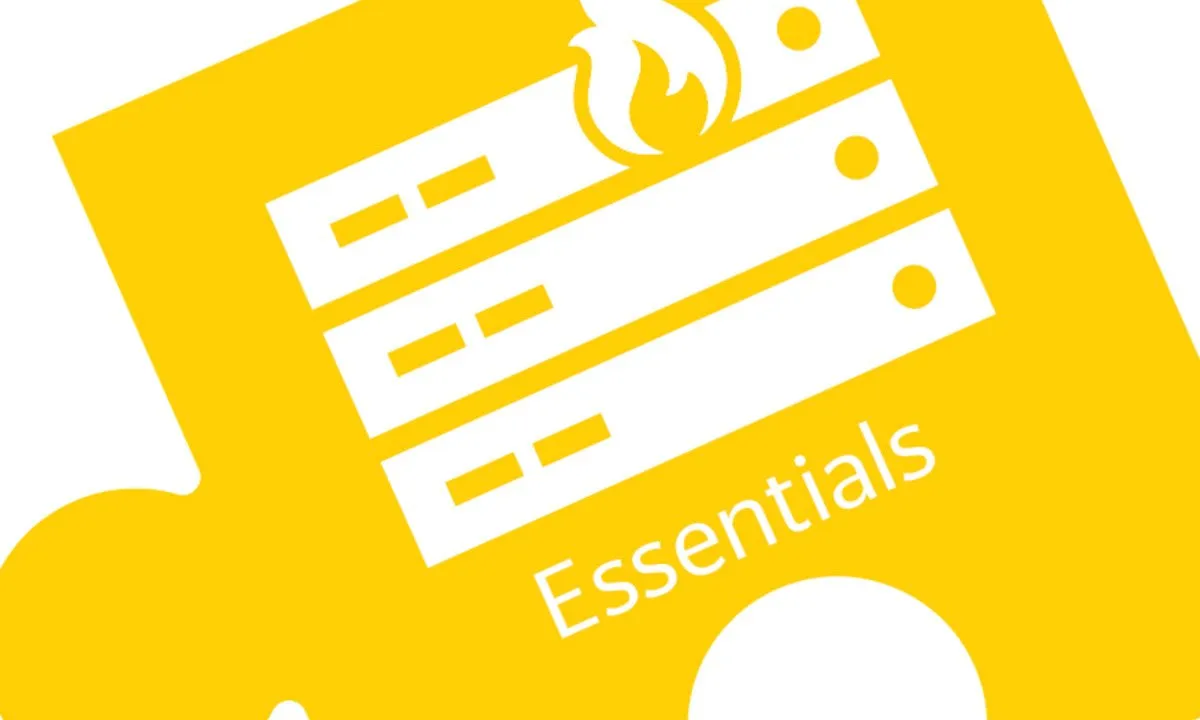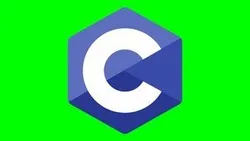
C Programming: Pointers and Memory Management - 4 
This course explores the fundamentals of memory management and pointer usage in C programming. Students will gain an understanding of how memory is allocated and manipulated to create efficient and effective programs. ▼
ADVERTISEMENT
Course Feature
![]() Cost:
Cost:
Free
![]() Provider:
Provider:
Coursera
![]() Certificate:
Certificate:
Paid Certification
![]() Language:
Language:
English
![]() Start Date:
Start Date:
29th May, 2023
Course Overview
❗The content presented here is sourced directly from Coursera platform. For comprehensive course details, including enrollment information, simply click on the 'Go to class' link on our website.
Updated in [March 06th, 2023]
In this course, we will examine a key concept, foundational to any programming language: the usage of memory.
This course builds upon the basic concept of pointers, discussed in C Programming: Modular Programming and Memory Management, and introduces the more advanced usage of pointers and pointer arithmetic. Arrays of pointers and multidimensional arrays are addressed, and you will learn how to allocate memory for your own data during program execution. This is called dynamic memory allocation at runtime using pointers.
Within moments you will be coding hands-on in a browser tool developed for this course, receiving instant feedback on your code. No need to install anything!
Why learn C and not another programming language? Did you know that smartphones, your car's navigation system, robots, drones, trains, and almost all electronic devices have some C-code running under the hood? C is used in any circumstance where speed and flexibility are important, such as in embedded systems or high-performance computing.
In this course, you will also gain experience with programming concepts that are foundational to any programming language.
At the end of this course, you will reach the fourth milestone in the C Programming with Linux Specialization, unlocking the door to a career in computer engineering.
Your job Outlook:
- Programmers, developers, engineers, managers, and related industries within scientific computing and data science;
- Embedded systems such as transportation, utility networks, and aerospace;
- Robotics industry and manufacturing;
- IoT (Internet of Things) used in smart homes, automation, and wearables.
- IEEE, the world's largest technical professional organization for the advancement of technology, ranks C as third of the top programming languages of 2021 in demand by employers. (Source: IEEE Spectrum)
This course has received financial support from the Patrick & Lina Drahi Foundation.
(Please note that we obtained the following content based on information that users may want to know, such as skills, applicable scenarios, future development, etc., combined with AI tools, and have been manually reviewed)
This course, C Programming: Pointers and Memory Management - 4, is the fourth milestone in the C Programming with Linux Specialization. It builds upon the basic concept of pointers, discussed in C Programming: Modular Programming and Memory Management, and introduces the more advanced usage of pointers and pointer arithmetic. Arrays of pointers and multidimensional arrays are addressed, and students will learn how to allocate memory for their own data during program execution. This is called dynamic memory allocation at runtime using pointers.
The course is designed to be hands-on, with students coding in a browser tool developed for this course, receiving instant feedback on their code. No need to install anything!
C is used in any circumstance where speed and flexibility are important, such as in embedded systems or high-performance computing. This course will also provide students with experience with programming concepts that are foundational to any programming language.
At the end of this course, students will have the knowledge and skills to pursue a career in computer engineering, programming, development, engineering, management, and related industries within scientific computing and data science, embedded systems, robotics industry and manufacturing, and IoT (Internet of Things). According to IEEE, the world's largest technical professional organization for the advancement of technology, C is ranked third of the top programming languages of 2021 in demand by employers.
This course has received financial support from the Patrick & Lina Drahi Foundation.
[Applications]
Upon completion of this course, students will be able to apply their knowledge of pointers and memory management to a variety of programming languages. They will be able to use dynamic memory allocation to create data structures and manipulate data in real-time. Additionally, they will be able to use their knowledge of C programming to develop applications for embedded systems, robotics, and the Internet of Things. Furthermore, they will be well-prepared to pursue a career in computer engineering, programming, and related industries.
[Career Paths]
Recommended Career Paths:
1. Software Developer: Software developers create, test, and maintain software applications and systems. They use programming languages such as C to develop software solutions for businesses and organizations. Software developers must have a strong understanding of computer science and programming principles, and they must be able to work with a variety of programming languages. The demand for software developers is expected to grow significantly in the coming years, as businesses and organizations continue to rely on software solutions to improve their operations.
2. Embedded Systems Engineer: Embedded systems engineers design, develop, and maintain embedded systems, which are computer systems that are embedded into larger systems. They use programming languages such as C to create embedded systems that are used in a variety of industries, such as transportation, aerospace, and robotics. Embedded systems engineers must have a strong understanding of computer science and programming principles, and they must be able to work with a variety of programming languages. The demand for embedded systems engineers is expected to grow significantly in the coming years, as businesses and organizations continue to rely on embedded systems to improve their operations.
3. Robotics Engineer: Robotics engineers design, develop, and maintain robots and robotic systems. They use programming languages such as C to create robots and robotic systems that are used in a variety of industries, such as manufacturing, healthcare, and transportation. Robotics engineers must have a strong understanding of computer science and programming principles, and they must be able to work with a variety of programming languages. The demand for robotics engineers is expected to grow significantly in the coming years, as businesses and organizations continue to rely on robots and robotic systems to improve their operations.
4. IoT Engineer: IoT engineers design, develop, and maintain Internet of Things (IoT) systems. They use programming languages such as C to create IoT systems that are used in a variety of industries, such as smart homes, automation, and wearables. IoT engineers must have a strong understanding of computer science and programming principles, and they must be able to work with a variety of programming languages. The demand for IoT engineers is expected to grow significantly in the coming years, as businesses and organizations continue to rely on IoT systems to improve their operations.
[Education Paths]
Recommended Degree Paths:
1. Bachelor of Science in Computer Science: This degree program provides students with a comprehensive understanding of computer science fundamentals, including programming, data structures, algorithms, operating systems, computer architecture, and software engineering. It also covers topics such as artificial intelligence, machine learning, and computer graphics. This degree is ideal for those interested in pursuing a career in software engineering, computer programming, or computer systems engineering.
2. Master of Science in Computer Science: This degree program provides students with an advanced understanding of computer science topics, such as computer networks, distributed systems, computer security, and software engineering. It also covers topics such as artificial intelligence, machine learning, and computer graphics. This degree is ideal for those interested in pursuing a career in software engineering, computer programming, or computer systems engineering.
3. Doctor of Philosophy in Computer Science: This degree program provides students with an in-depth understanding of computer science topics, such as computer networks, distributed systems, computer security, and software engineering. It also covers topics such as artificial intelligence, machine learning, and computer graphics. This degree is ideal for those interested in pursuing a career in research or academia.
4. Master of Science in Data Science: This degree program provides students with an understanding of data science fundamentals, including data mining, machine learning, and data visualization. It also covers topics such as artificial intelligence, natural language processing, and predictive analytics. This degree is ideal for those interested in pursuing a career in data science, analytics, or machine learning.
Pros & Cons

High quality teaching, thorough content, easy to follow instructors, great visualization, fantastic series.

Autograder issues, video buffering slow, exercises too easy.
Course Provider

Provider Coursera's Stats at AZClass
Discussion and Reviews
0.0 (Based on 0 reviews)
Explore Similar Online Courses

Crash Course - Japanese Candlesticks Trading Mastery Program

Big Data Essentials: HDFS MapReduce and Spark RDD

Python for Informatics: Exploring Information

Social Network Analysis

Introduction to Systematic Review and Meta-Analysis

The Analytics Edge

DCO042 - Python For Informatics

Causal Diagrams: Draw Your Assumptions Before Your Conclusions

Whole genome sequencing of bacterial genomes - tools and applications

Learn C Programming Using the Classic Book by Kernighan and Ritchie

C Programming: Modular Programming and Memory Management - 3


Start your review of C Programming: Pointers and Memory Management - 4